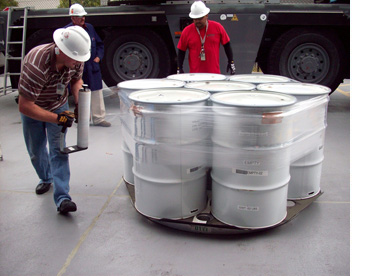


Waste Isolation Pilot Plant 
Transuranic, or TRU, waste began accumulating in the 1940s with the beginning of the nation's nuclear defense program. As early as the 1950s, the National Academy of Sciences recommended deep disposal of long-lived TRU radioactive wastes in geologically stable formations, such as deep salt beds. Sound environmental practices and strict regulations require such wastes to be isolated to protect human health and the environment. Bedded salt is free of fresh flowing water, easily mined, impermeable and geologically stable – an ideal medium for permanently isolating long-lived radioactive wastes from the environment. However, its most important quality in this application is the way salt rock seals all fractures and naturally closes all openings. Throughout the 1960s, government scientists searched for an appropriate site for radioactive waste disposal, eventually testing a remote desert area of southeastern New Mexico where, 250 million years earlier, evaporation cycles of the ancient Permian Sea had created a 2,000-foot-thick salt bed. In 1979, Congress authorized the U.S. Department of Energy's (DOE) Waste Isolation Pilot Plant (WIPP). The WIPP facility, located 26 miles southeast of Carlsbad, N.M., was constructed during the 1980s. Congress limited WIPP to the disposal of defense-generated TRU wastes. In 1998, the U.S. Environmental Protection Agency (EPA) certified WIPP for safe, long-term disposal of TRU wastes. |